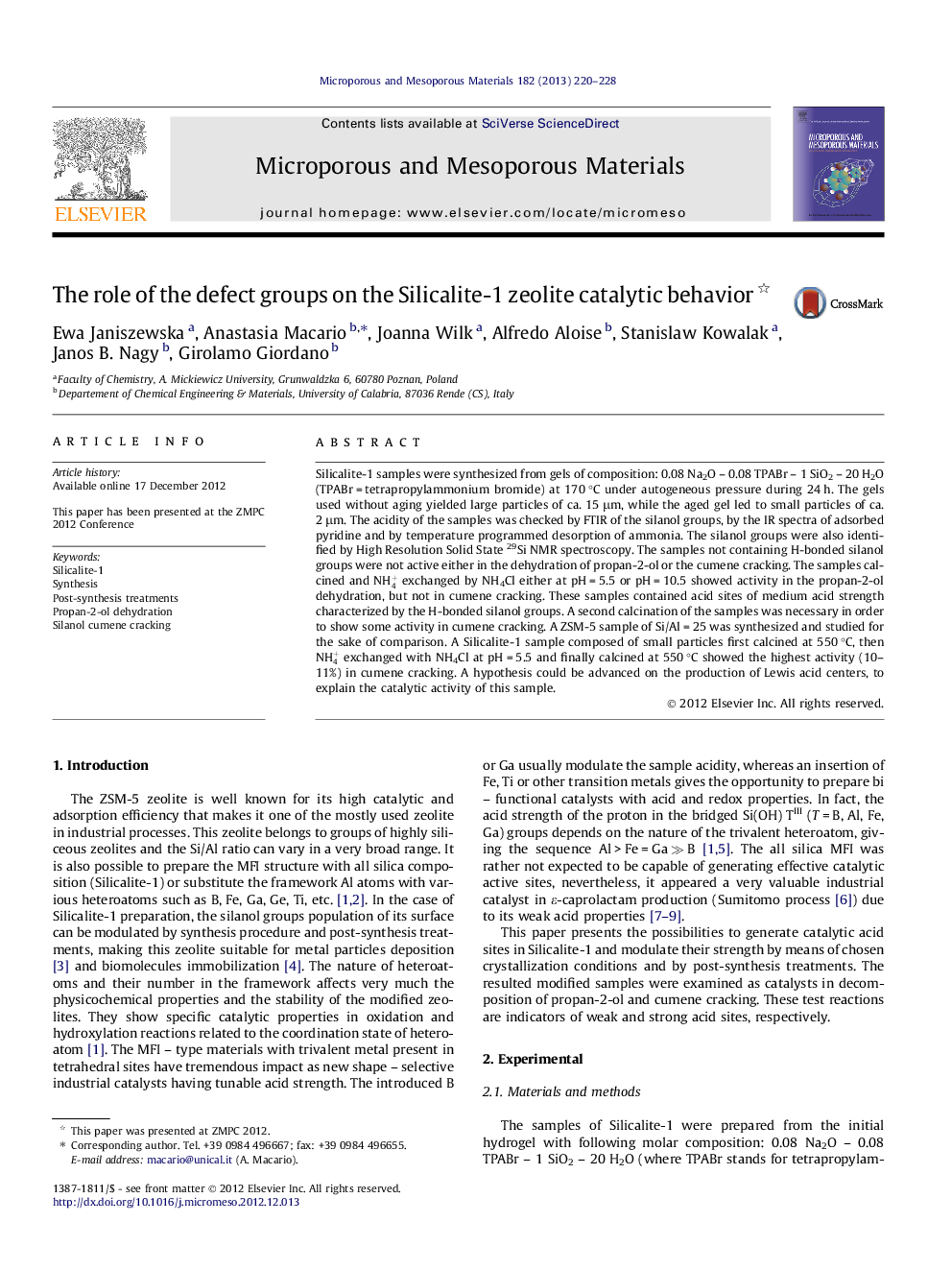| کد مقاله | کد نشریه | سال انتشار | مقاله انگلیسی | نسخه تمام متن |
|---|---|---|---|---|
| 73424 | 49057 | 2013 | 9 صفحه PDF | دانلود رایگان |

Silicalite-1 samples were synthesized from gels of composition: 0.08 Na2O – 0.08 TPABr – 1 SiO2 – 20 H2O (TPABr = tetrapropylammonium bromide) at 170 °C under autogeneous pressure during 24 h. The gels used without aging yielded large particles of ca. 15 μm, while the aged gel led to small particles of ca. 2 μm. The acidity of the samples was checked by FTIR of the silanol groups, by the IR spectra of adsorbed pyridine and by temperature programmed desorption of ammonia. The silanol groups were also identified by High Resolution Solid State 29Si NMR spectroscopy. The samples not containing H-bonded silanol groups were not active either in the dehydration of propan-2-ol or the cumene cracking. The samples calcined and NH4+ exchanged by NH4Cl either at pH = 5.5 or pH = 10.5 showed activity in the propan-2-ol dehydration, but not in cumene cracking. These samples contained acid sites of medium acid strength characterized by the H-bonded silanol groups. A second calcination of the samples was necessary in order to show some activity in cumene cracking. A ZSM-5 sample of Si/Al = 25 was synthesized and studied for the sake of comparison. A Silicalite-1 sample composed of small particles first calcined at 550 °C, then NH4+ exchanged with NH4Cl at pH = 5.5 and finally calcined at 550 °C showed the highest activity (10–11%) in cumene cracking. A hypothesis could be advanced on the production of Lewis acid centers, to explain the catalytic activity of this sample.
By different synthesis conditions and post-synthesis treatments, surface properties of Silicalite-1 type materials have been modified. Cumene cracking has been used as probe reaction in order to identify the different catalytic behaviors of prepared catalysts. Proposed reaction mechanism of cumene cracking is reported in following Scheme:Figure optionsDownload as PowerPoint slideHighlights
► Silicalite-1 was prepared by synthesis gels aging and post-synthesis treatments.
► Silanol groups population has been affected by synthesis procedure.
► Type and strength of acid sites affect the catalytic behavior.
► By cumene cracking, different catalytic sites has been identified.
Journal: Microporous and Mesoporous Materials - Volume 182, 1 December 2013, Pages 220–228